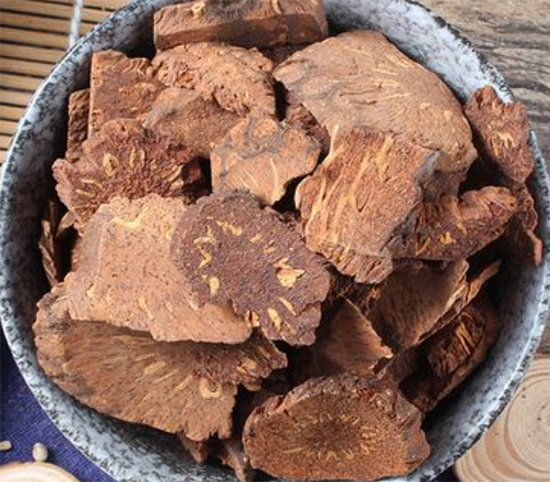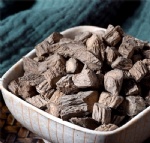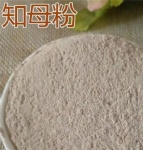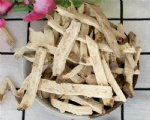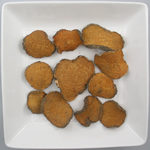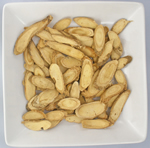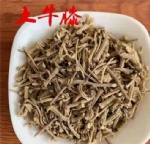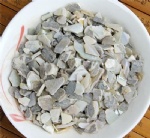
|
KWOK SHING HONG |
|
|||
Products CategoryContact Us
Add: China |
HERBA POTENTILLAEProduct name : HERBA POTENTILLAE Item : 79351486091 Details :Guanzhong, also known as Jifu, Luo ("Er Ya"), Guanjie, Guanqu, Baitou, Hujuan, Bianfu ("The Classic"), Guanzhong, Guanzhong, Guanlai, Qumu, Boqin , Yaoqu, Huang Zhong ("Wu Pu Materia Medica"), Bo Ping, Le Zao ("Bie Lu"), Cao Zhitou (Tao Hongjing), Bo Yao, Yao Zao ("Classic Interpretation"), and Pteris ("Classic Interpretation") "Materia Medica Tujing"), fern and weed root ("Southern Yunnan Materia Medica"), Heigouji, Guanzhong, and Guanzhong ("Compendium"). Guanzhong is the rhizome of Trichofern chrysalis, the main component is syringin, which is a complex derivative of phloroglucinol, which is unstable and can slowly decompose to produce trigeminin and white trigeminin; it also contains Trigeminal phenol, yellow trigeminic acid, cotton maric acid. It also contains volatile sleeves, cotton tannins, fats, resins, etc.; it also contains triterpenoids such as fern, jasmine-b, maidenone, jasmol, jasmol-29 ensylene, etc. Excavated in spring and autumn, cut off the petioles and fibrous roots, removed the soil, and dried in the sun. Identification of medicinal materials: 1. Northeast Guanzhong: It is the dry rhizome of the plant D. It is long conical, with a blunt round or truncated upper end and a pointed lower end, slightly curved; 10-20 cm long and 5-8 cm in diameter. The surface is yellow-brown to black-brown, densely arranged with neatly arranged petiole residues and scale leaves, and has curved linear fine roots. The petiole residue is flat cylindrical, slightly curved, hard, and slightly flat at the fracture surface; brown, with 5 to 7 vascular bundles, in the shape of yellowish-white spots, arranged in a ring, with a pair of river surfaces slightly larger, outside the base of each petiole Often produce 3 fibrous roots. Peel off the petiole residue, and the rhizome can be seen, 1-2 cm in diameter, hard and not easy to break, the section is uneven, dark green to brown. The smell is special; the taste is light and slightly astringent at first, gradually bitter and pungent. Mainly produced in Northeast China. 2. Crescent fern It is the dry rhizome of the plant Ermei fern. It is long oval, with blunt upper end and pointed lower end; 10-16 cm long and 6-10 cm in diameter; dark brown. The upper part of the petiole residue is broad and flat, tapering downwards, with obvious spiny protrusions on both sides of the border, and the base is narrow and usually rhomboid; Arranged in the shape of "eight"; in the middle of the vascular bundle, there is often a dark spot or a hollow. There are 1 or 3 fibrous roots on the outer side of the petiole base, often flattened and branched. Slight and specific gas, astringent or bitter. Produced in Beijing, Henan, Gansu and other places. 3. Pod ferns For the rhizome of the plant pod fern. Obovate or long egg-shaped, obtuse at the top, slightly pointed at the bottom, slightly curved, often with protruding rhizomes in the shape of a beak; overall length 10-16 cm, diameter 4-7 cm; brown; surrounded by densely remnant petioles Base and fibrous roots and a few scales. The upper part of the petiole residue is flat, narrowing downwards, the back is raised, and there is an obvious longitudinal ridge in the center, and "V" or "M"-shaped protruding wrinkles can be seen near the upper end; the texture is hard and brittle, easy to break, and the section is slightly Flat, with 2 vascular bundles arranged in a "eight" shape. 1 to 3 curved fibrous roots grow from the base of petiole, multi-branched, sometimes with brown hairs. Slight and specific smell, astringent taste Produced in Jilin, Hebei, Henan, Beijing, Shaanxi and other places. 4, Zi Osmanthus Guanzhong, also known as: Wei Guanzhong. It is the dry rhizome of Osmanthus japonica plant. Conical or triangular conical, slightly curved, sometimes branched at the top; 10-20 cm long, 4-8 cm in diameter; surface brown, densely covered with oblique petiole residues and fibrous roots, without scales. The petiole residue is oblate cylindrical, blunt and rounded at the edge, with ear-shaped stipules, but the wings are easy to peel off, and most of them are gone or torn; the texture is hard, and the fracture surface is crescent-shaped or oblate, mostly hollow , it can be seen that the "U"-shaped vascular bundle, the sclerenchyma of the stipule wing are connected into one piece, and the cross-section is a black line. Curved fibrous roots grow from the base of the petiole, often flattened and multi-branched. The gas is weak and specific, and the taste is light and slightly astringent. Produced in Central China, East China and other places. 5. Black fern It is the dry rhizome of the plant fern. It is cylindrical or prismatic, with a slightly larger upper end; 10-20 cm long and 5-6 cm in diameter; brown or dark brown. Rhizome erect, stout, densely covered with hollow petiole remnants and fibrous roots and scales. The petiole residue is oblate and cylindrical, the surface is covered with dark brown overgrown scales, and the shed part is a small protrusion, rough; the texture is hard, the center of the cross section is mostly hollow, the skin is thin, and there are more than ten point-like vascular bundles arranged in Ring-shaped, the inner two slightly larger. The base of the petiole is relatively thick, and there is a tumor-like protrusion on the outside, and more than ten fibrous roots grow in clusters. The gas is weak and specific, and the taste is slightly astringent. Produced in Hunan, Guangdong, Guangxi and other places. 6. Cycas fern It is the dry rhizome of the plant Cycas fern. It is cylindrical, sometimes slightly curved, and most of them have been cut in half longitudinally or cross-cut or obliquely into thick slices. The rhizome is thick, 3-5 cm in diameter, densely covered with very short petiole residues and fibrous roots and a few scales, or the petiole residues are all cut off; the texture is hard, the cross-section is round, grayish brown to reddish brown, densely covered with small black spots; The edge is irregularly crescent-shaped, the outer skin is dark brown, and the cortex is scattered with many yellow dot-shaped vascular bundles. There are more than ten vascular bundles in the central column, mostly in the shape of "U", "V" or short lines, arranged in a circle, forming a pattern . The cut surface of petiole base is nearly round, 5-8 mm in diameter, densely covered with small black spots, 6-10 vascular bundles, arranged in rings, and the scales are brownish-yellow hairy and soft. The gas is weak and the taste is astringent. Produced in Guangdong and Guangxi. 7. Dog ridge fern It is the dry rhizome of the plant fern. It is long cylindrical or cut into a square column, straight or slightly curved, with a sharp lower end; 6-26 cm long, 2-7 cm in diameter; reddish brown to dark brown. The stout rhizome is densely covered with stubby petiole remnants and fibrous roots and scales. The petiole residue is semi-cylindrical, sickle-shaped and hard, with 2 to 4 vascular bundles visible on the fracture surface, and the inner pair is large, arranged in a "eight" or "ε3" shape. A curved fibrous root often grows from the base of the petiole. The scales are more near the top, brownish red, flaky, entire. The gas is weak and the taste is slightly bitter. Produced in Zhejiang, Hunan, Sichuan and other places. The varieties of guanzhong have always been very complicated. In addition to the above-mentioned varieties, there are many kinds of rhizomes of ferns that are used as guanzhong in different regions. For example, the rhizomes of Liaodong Liaodong fern are used in Henan, Shandong, and Hunan; the rhizomes of single-bud fern are used in Gansu, Hunan, Yunnan, and Guizhou; the rhizomes of Lepidopteris are used in Tibet; in Xinjiang. In addition, the Phytophthora chinensis plant in the family Lepidopteridaceae is commonly called Guanzhong, which is consistent with the Guanzhong recorded in "Plant Names and Facts", but the rhizome of this plant is rarely used as medicine at present, only in Sichuan and Yunnan It is used by folks in some counties in , Guizhou, Jiangxi and other provinces, as well as in Nanjing, Jiangsu and other places. See "Dizzy chicken head" article. Pharmacological effects: There are many varieties of Guanzhong, and most of them have not been identified in pharmacological tests. 1. Deworming effect Trichofern chrysalis, that is, Northeast Guanzhong, the root is called Mianma, which contains 49.17% of Drichomyces semen, and can be used as a substitute for Oumianma to drive away tapeworms. Oumianma can paralyze tapeworms and has a long history of application. According to domestic reports, Guanzhong (unidentified variety) is effective against Ascaris suum in vitro. Drichoptera also repels bovine liver leeches. Its compound decoction has curative effect on bovine fascioliasis and broad fluke. 2. Antiviral effect It was reported in Shanghai that Guanzhong has a strong inhibitory effect on influenza virus (primary influenza A PR strain, Asian A virus) in the chicken embryo test, and is also effective in the mouse (instillation method) test. But the effect is weak. This antiviral effect is related to its tannic acid content (containing 14.5%). Shaanxi also reported that Guanzhong has inhibitory effects on influenza virus A (PR6), Asian A (57-4), B (Lee), C (1233), and D (Sendai). In the tissue culture of primary monolayer cells of human embryonic kidney, it has also been proved that Guanzhong is resistant to adenovirus type 3 of No. 479, polio type II of No. 72, Aike type 9 of No. 44, Coxsackie type A9, Coxsackie type Seven representative virus strains including B6 type, Japanese encephalitis (Jingweiyan 1 strain), and herpes simplex No. 140 have strong antiviral effects. Omega's water decoction also has the effect of anti-herpes simplex virus. 3. Antibacterial effect Reports from Jiangxi, Hunan, and Guangdong show that the local rhubarb has some antibacterial effects, but the effect is not strong. It is used for drinking water disinfection or prevention of epidemic cerebrospinal meningitis in rural areas. It is also said to have some inhibitory effect on skin fungi. 4. The effect on the uterus The decoction and the refined active ingredients have a significant excitatory effect on the isolated and eutopic uteri of rabbits, and the contraction is enhanced and the tension is increased. Trichofern dichotome injection has a significant excitatory effect on the isolated uterus of guinea pigs (0.1-0.7 ml. Each ml is equivalent to 50 mg of crude drug) and rabbits (0.8-1.3 ml), and the movement frequency and tension are increased , the amplitude decreases, and a large dose shows a tonic contraction; but after changing the wash, it can still return to normal. The effect of Ermeiziguanzhong on the uterus is not obvious. According to reports, "Zhenxuejing" composed of Guanzhong and Quanshen has hemostatic, analgesic and anti-inflammatory effects when used externally. Function Indications: Kill roundworms, tapeworms, pinworms, clear away heat, detoxify, cool blood, stop bleeding. Treat wind-heat and cold. Warm rash, vomiting blood, epistaxis, intestinal wind and blood in the stool, bloody dysentery, metrorrhagia, leukorrhagia, sores, hematuria, menorrhagia, bleeding from knife wounds, roundworms, worms, tapeworms, induced abortion, postpartum hemorrhage. 1. "The Classic": "The evil heat in the main abdomen, all poisons, kill three insects." 2. "Bie Lu": "Remove Cunbai, break the lump in the abdomen, remove head wind, stop gold sores." 3. "Ben Cao Tu Jing": "Stop epistaxis." 4. "Southern Yunnan Materia Medica": "Detoxification, hemostasis, detoxification." 5. "Compendium": "Control the metrorrhagia, leukorrhagia, postpartum blood gas pain, rash poison, lacquer poison, bone choking." 6. "Meeting Medical Mirror": "Treating pathogenic heat and abdominal pain, and releasing the epidemic gas." 7, "Feng Jing Xu Shu": "control sore throat, subside stubborn swelling." 8. "Handbook of Commonly Used Chinese Herbal Medicine in Northeast China": "Deworming, hemostasis, heat-clearing and detoxification. Treat roundworms, tapeworms, abdominal pain due to worms; uterine function animal bleeding, leucorrhea. Put it in a water tank and drink its water to prevent influenza , colds, meningitis, measles." 9. "Shaanxi Chinese Herbal Medicine": "clearing heat and detoxifying, stopping bleeding and killing insects. Prevent infectious diseases such as Japanese encephalitis and mumps. Treat blood in the stool. Hematuria, epistaxis, menorrhagia, ascariasis, pinworms. " 10. Jinhua "Commonly Used Chinese Herbal Medicine Single Prescription Selection": "Expelling wind and activating blood circulation, nourishing liver and kidney. Treating wind-cold-damp arthralgia, sore waist and knees, and enuresis." Remarks: The variety of guanzhong has always been very complicated. In addition to the above-mentioned varieties, there are many kinds of rhizomes of ferns that are used as guanzhong in different regions. For example, the rhizomes of Liaodong Liaodong fern are used in Henan, Shandong, and Hunan; the rhizomes of single-bud fern are used in Gansu, Hunan, Yunnan, and Guizhou; the rhizomes of Lepidopteris are used in Tibet; in Xinjiang. In addition, the Phytophthora chinensis plant in the family Lepidopteridaceae is commonly called Guanzhong, which is consistent with the Guanzhong recorded in "Plant Names and Facts", but the rhizome of this plant is rarely used as medicine at present, only in Sichuan and Yunnan It is used by folks in some counties in , Guizhou, Jiangxi and other provinces, as well as in Nanjing, Jiangsu and other places. Barcode: 79351486091 Ingredients: Guanzhong slices Specifications: 16oz (454g) Efficacy: kill roundworms, tapeworms, pinworms, clear away heat, detoxify, cool blood, stop bleeding. Treat wind-heat and cold. Warm rash, vomiting blood, epistaxis, intestinal wind and blood in the stool, bloody dysentery, metrorrhagia, leukorrhagia, sores, hematuria, menorrhagia, bleeding from knife wounds, roundworms, worms, tapeworms, induced abortion, postpartum hemorrhage. Send Inquiry : Related Products : |
Home
|
About Us
|
Products
|
News
|
Feedback
|
Contact Us
|
SiteMap
Copyright © 2025 KWOK SHING HONG All Rights Reserved
Copyright © 2025 KWOK SHING HONG All Rights Reserved






 KWOK SHING HONG
KWOK SHING HONG  ROOTS
ROOTS 